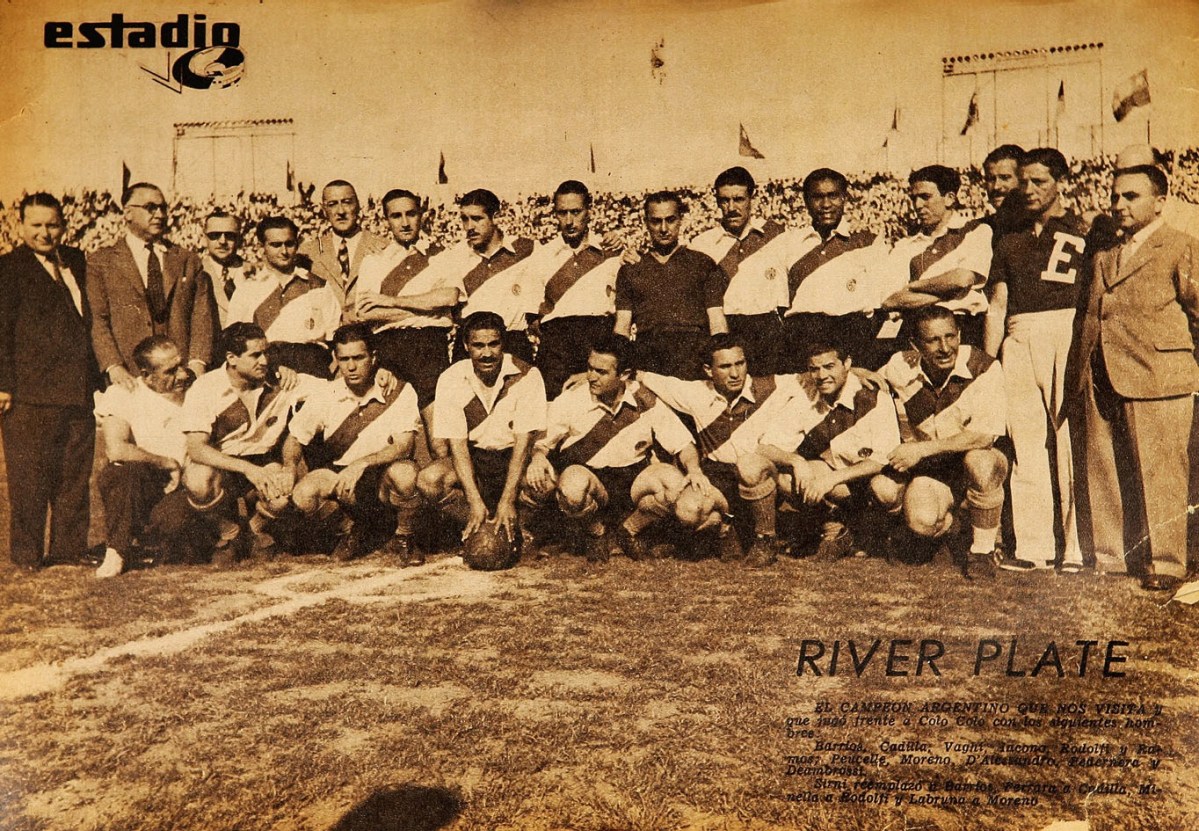
HISTORY tells us that in the early 1940s, River Plate had an outstanding team that dominated Argentinian football. In those far-off days, it was a reputation built on rumour, second-hand accounts and the occasional article in a newspaper. The River team of that era could not possibly have been well known in Europe, largely because the World Cup did not return to action until 1950 and in any case, Argentina had withdrawn from that competition before even playing a qualifying match. There was no way the great footballing public had any evidence of River’s prowess, although in 1951, some members of La Máquina (the machine), including striker Ángel Labruna, winger Félix Loustau and the specialist man-marker Norberto Yácano, were in the Argentina team that played England at Wembley.


Argentina’s football had embraced professionalism at the start of the 1930s, but to many they were a little slow to adapt to the demands even though the national team had reached the World Cup final in 1930. Players liked a drink and a smoke and loved to eat excessively well, and some of them played the role of the lounge lizard rather proficiently. They were good-looking fellows, if a little rogueish, and clearly enjoyed the good life, none more so than José Manuel Moreno, who was a maverick of a player and a lover of the tango but rarely trained properly. There was no denying he was the closest thing to the complete player during that era, with technique, audacity and vision. He was a character who captured the imagination of the spectators, and many historians believe that if he had lived with greater discipline, he would have been one of the true greats. His team-mates, who may have despaired of him at times, also appreciated his value, so much so that when he was suspended by club officials, they refused to play and forced the reserves to play out the 1939 season.
River Plate’s forward line scared the opposition stiff. At its peak it included Moreno, free-scoring Labruna, the tireless Loustau, Adolfo Pedernera and Juan Carlos Muñoz. Later it would see a young Alfredo Di Stefano make his early headlines in the game. Interestingly, this “classic” forward line would only play together 18 times in five years, yet its reputation has lived on for decades.
Carlos Peucelle, who was well into his 30s at that time, was very instrumental in building the reputation of the River team, along with the input of Renato Cesarini. He played over 300 games between 1931 and 1941 and then became a de facto coach of the team and an early form of technical director following the failure of Ferenc Plattkó to introduce the so-called M-defence which involved the introduction of a holding or anchor midfielder. Peucelle was a superb player himself, he played in the 1930 World Cup for Argentina, scoring three goals in the semi-final and final.
River were a relatively wealthy club and in the 1930s, they became known as Los Millonarios. Attracting players was not difficult and by the end of that decade, they had started to construct the first modern football stadium in Argentina, El Monumental.
In 1941 they won the Argentinian league and thrashed their Buenos Aires neighbours Boca Juniors to win the trophy. They were not invincible, but they had an aura about them that made it hard for opponents. The editor of the influential magazine, El Gràfico called them La Máquina, as a tribute to their ability to dominate through a somewhat mechanised process, but in truth it was a combination of artistry, invention and good organisation that earned them the nickname. Peucelle also had a habit of moving players around to exploit their strengths, not unlike the total footballers of the early 1970s. Crowds flocked to see La Máquina play, even in friendlies or exhibition matches. As well as being compared to a well-oiled machine, they also became known as Los Caballeros de Angustia, the knights of anxiety, because they seemed to be in no hurry to score but preferred instead to outpass their opponents while also frustrating the crowd.
In 1942, River retained their title – again against Boca – but then missed out in 1943 and 1944 to the same club by the narrowest of margins. The top of the Argentinian league was very competitive, but in 1945, they were champions once more with four points separating them from their old rivals.
The River team of the early 1940s was, in some ways, as important to Argentina as the tragic Torino side that perished in the Superga air crash was to Italy. Their golden days were between 1941 and 1947 but after that period, they had to wait five years for another league title. The star players mostly had lengthy careers with the club; Labruna spent 20 years with River, Loustau had a 15-year run, Moreno had two spells that ended in 1948 and Muñoz was with the club for 11. Sadly, only one of the fabled five – Labruna – played in a World Cup. This lack of visibility has arguably made the legend of La Máquina even stronger and guarantees their name will live on for many more years.
River Plate 1941-1945: Julio Barrios, José Soriano, Héctor Grisetti, José Ramos, Noberto Yácano, Eduardo Rodríguez, Avelino Cadilla, Bruno Rodolfi, Ricardo Vaghi, Aristóbulo Deambrosi, Juan Carlos Muñoz, Alberto Gallo, José Manuel Moreno, Adolfo Pedernera, Ángel Labruna, Carlos Peucelle, Bernabé Ferreyra, Félix Loustau.
Published by







